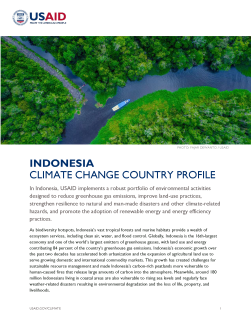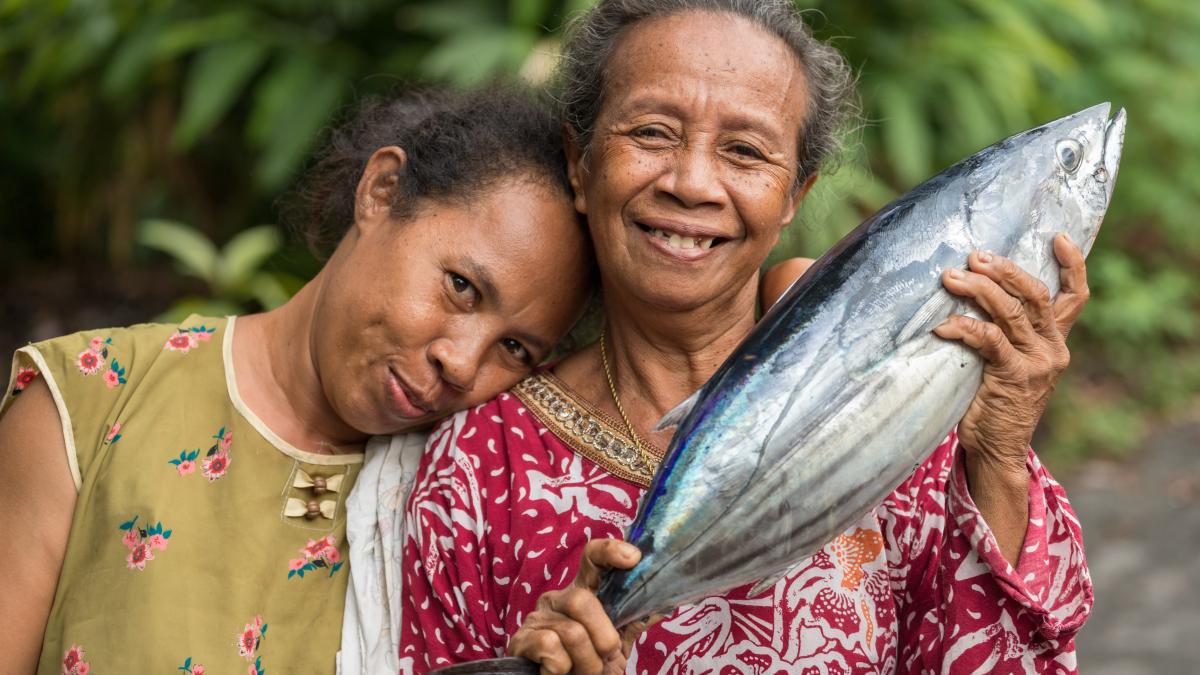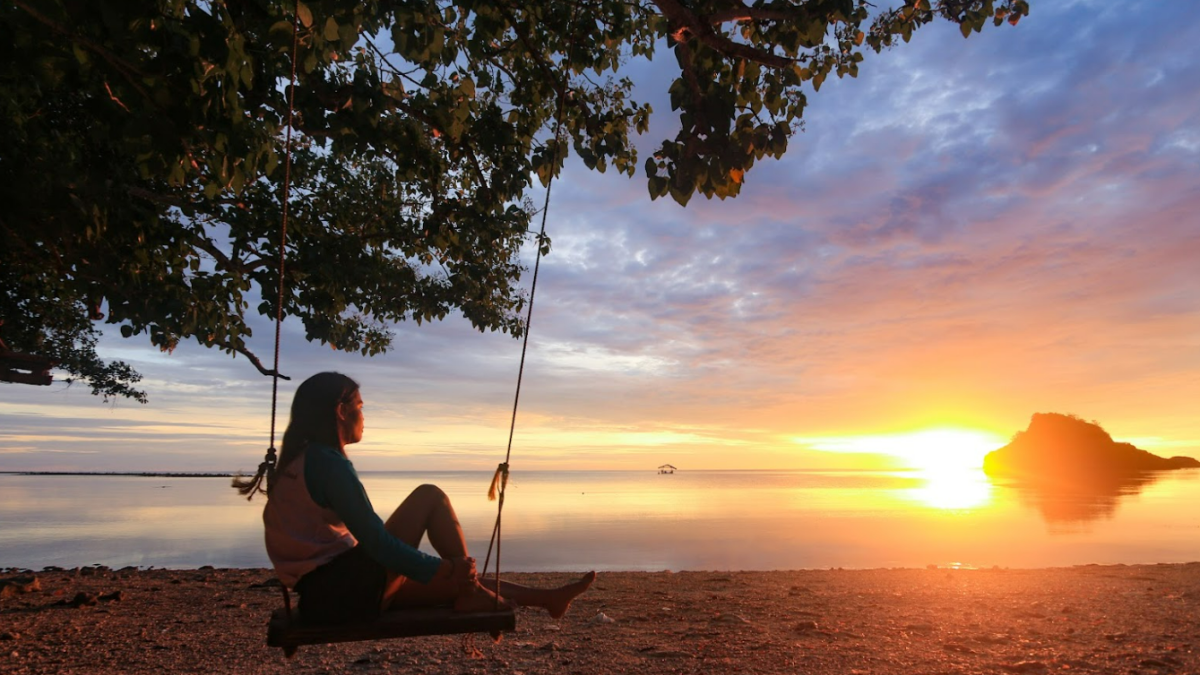FACT SHEET – In Indonesia, USAID implements a robust portfolio of environmental activities designed to reduce greenhouse gas emissions, improve land-use practices, strengthen resilience to natural and man-made disasters and other climate-related hazards, and promote the adoption of renewable energy and energy efficiency practices.
As biodiversity hotspots, Indonesia’s vast tropical forests and marine habitats provide a wealth of ecosystem services, including clean air, water, and flood control. Globally, Indonesia is the 16th-largest economy and one of the world’s largest emitters of greenhouse gasses, with land use and energy contributing 84 percent of the country’s greenhouse gas emissions. Indonesia’s economic growth over the past two decades has accelerated both urbanization and the expansion of agricultural land use to serve growing domestic and international commodity markets. This growth has created challenges for sustainable resource management and made Indonesia’s carbon-rich peatlands more vulnerable to human-caused fires that release large amounts of carbon into the atmosphere. Meanwhile, around 180 million Indonesians living in coastal areas are also vulnerable to rising sea levels and regularly face weather-related disasters resulting in environmental degradation and the loss of life, property, and livelihoods.
Government of Indonesia Climate Priorities
In 1992, the Government of Indonesia began participating in global climate negotiations at the Earth Summit, and it has advanced climate priorities ever since. In September 2022, Indonesia updated its 2015 Nationally Determined Contribution (NDC) to the Paris Agreement, committing to reduce greenhouse gas emissions by 32 percent (or 43 percent, with international assistance) by 2030. In its Long-Term Strategy for Low Carbon and Climate Resilience 2050, the Government of Indonesia agreed to explore opportunities to reach net-zero emissions by 2060 or sooner. To achieve these goals, it has implemented a moratorium on permits for clearing forests, established a peatland and mangrove restoration agency, and strengthened its forest fire fighting capabilities. In March 2022, the Government of Indonesia’s Ministry of Environment and Forestry released its operational plan to ensure that the country’s forest areas absorb more greenhouse gas emissions than they release—or, in other words, become a net carbon sink—by 2030.
In 2022, the Governments of Indonesia, Japan, and the United States, along with other international partners, announced the Just Energy Transition Partnership (JETP), which is intended to accelerate an ambitious and fair power sector transition by phasing out coal power and increasing renewable energy. JETP will advance Indonesia’s transition to net-zero emissions in the energy sector by almost ten years, and reduce cumulative greenhouse gas emissions by more than 300 megatons by 2030 and by more than 2 gigatons by 2060. In close partnership with the G7 International Partners Group countries and like-minded partners, the Government of Indonesia is also currently updating a Comprehensive Investment and Policy Plan that incorporates these overarching objectives.
USAID’s Climate Change Program: Objectives and Results
In Indonesia, USAID implements a robust environment portfolio designed to reduce greenhouse gas emissions, improve land-use practices, strengthen resilience to natural and man-made disasters and other climate-related hazards, and promote the adoption of renewable energy and energy efficiency practices.
Adaptation
USAID supports Indonesia’s climate resilience goals by equipping government, businesses, and communities with the tools and information they need to adapt to the effects of climate change.
USAID supports stakeholders at the national and sub-national levels to better collect and use climate data to strengthen water resource management and expand access to water and sanitation. In addition, USAID builds the capacity of Indonesia’s disaster management agencies and trains communities in vulnerable areas to better prepare for natural and man-made disasters and become more resilient in the aftermath of such events.
Key Results
USAID has helped:
- Contribute to the development of the Government of Indonesia’s National Action Plan for Climate Change Adaptation; this plan was later integrated into the Government of Indonesia’s 2020-2024 national development plan, which allocated more than $2.4 billion in funds for climate change and disaster resilience
- Leverage more than $7 million, through partnerships with companies like Mars and Olam, to increase adoption of sustainable agroforestry practices for smallholder farmers of high-demand commodities such as cocoa and coffee; these partnerships have increased the resilience of more than 10,000 farmers to climate change, while improving their incomes and livelihoods
- Plant more than 920,000 coastal plants, including mangrove trees, in disaster-prone areas, creating a natural barrier along coastlines that protects people from storms and tsunamis while supporting biodiversity that provides families with both food and livelihoods; this work was conducted in collaboration with the Indonesian Red Cross
- Improve access to water and sanitation services for nearly 7.7 million Indonesians during the past 18 years, in partnership with the Government of Indonesia; by integrating water and wastewater services, USAID is also laying the foundation for long-term environmental stewardship and supporting urban resilience to the impacts of climate change
- Improve management of marine protected areas—covering approximately 8.6 million hectares of ocean that are home to fisheries, coral reefs, and “blue carbon ecosystems” such as mangroves and seagrasses—over the past five years, in partnership with the Government of Indonesia; USAID has also supported the development of climate change–sensitive policies, training, and outreach programs, which are helping build resilience to climate change in Indonesia’s marine and fisheries sector.
Renewable Energy and Reducing Methane Emissions
The Government of Indonesia’s energy policy prioritizes energy security and calls for an increase of renewable energy from 12 percent in 2018 to 23 percent by 2025. USAID supports Indonesia’s energy sector transformation toward a more sustainable, equitable, and reliable system with robust private sector participation. USAID is partnering with the Government of Indonesia to develop viable strategies to decarbonize the country’s power sector, including early retirement of coal power plants and integrating clean energy into the electricity grid to support Indonesia’s JETP goal of achieving net-zero emissions by 2050. USAID-supported activities in Indonesia also facilitate investment and private sector partnerships related to renewable energy.
USAID also works with city and district governments across Indonesia to improve solid waste collection and management, which will contribute to reducing emissions of methane, a potent greenhouse gas.
Key Results
USAID has helped:
- Facilitated more than $2 billion in renewable energy and energy efficiency investments in Indonesia since 2015; USAID also helped deploy 20 percent of Indonesia’s newly created renewable energy, providing clean energy access to more than 4.7 million people
- Promote the use of innovative energy sources, helping PLN, Indonesia’s national electricity company, connect the 98.4 megawatt (MW) Rantau Dedap geothermal power plant in South Sumatra with the 192 MW-peak Cirata floating solar project in West Java—the first project of its kind in Indonesia; USAID also assisted the 110 MW Ijen geothermal power plant in East Java to reach financial close in 2023, enabling the plant to begin construction
- Reduce or avoid 2.12 million tons of greenhouse gas emissions, thanks to USAID clean energy projects; USAID energy efficiency investments have also reduced an additional 22.3 million tons of greenhouse gas emissions
- Launch a solid waste management program in 2024, which will invest up to $24.7 million to reduce land-based sources of ocean plastics pollution and methane—a potent greenhouse gas—by promoting sustainable and integrated solid waste management
Sustainable Landscapes
Over the past decade, USAID programs have helped improve land use governance, promoted sustainable private sector practices, strengthened protected area management, and conserved Indonesia’s rich biodiversity. USAID has supported Indonesia’s GHG emission reduction goals through climate change mitigation programs in the agriculture, forestry, and other land-use sectors. In July 2023, USAID and the MOEF signed the Forestry and Other Land Use (FOLU) Net Sink Bilateral Framework Agreement, which will unlock up to $50 million in new assistance to support Indonesia’s FOLU Net Sink 2030 operational plan.
Key Results
- Through USAID’s contribution to the Indonesia Climate Change Trust Fund (ICCTF), GHG emissions were reduced by over four million tons of carbon dioxide equivalent (CO2e) by replanting trees and building biodigesters and infiltration pits. The Indonesia ICCTF is a multi-donor trust fund that Indonesia established to reduce GHG emissions and promote climate resilience.
- USAID is working with provincial and district governments, communities, and the private sector to strengthen subnational environmental governance in 12 districts in Aceh and West, Central, and East Kalimantan provinces with large primary forests to improve their forest management. USAID supports a diverse array of instruments to improve subnational planning in order to embed a stronger conservation focus, backed by greater public and private investment. This effort focused particularly on protecting important high conservation value and high carbon stock areas.




